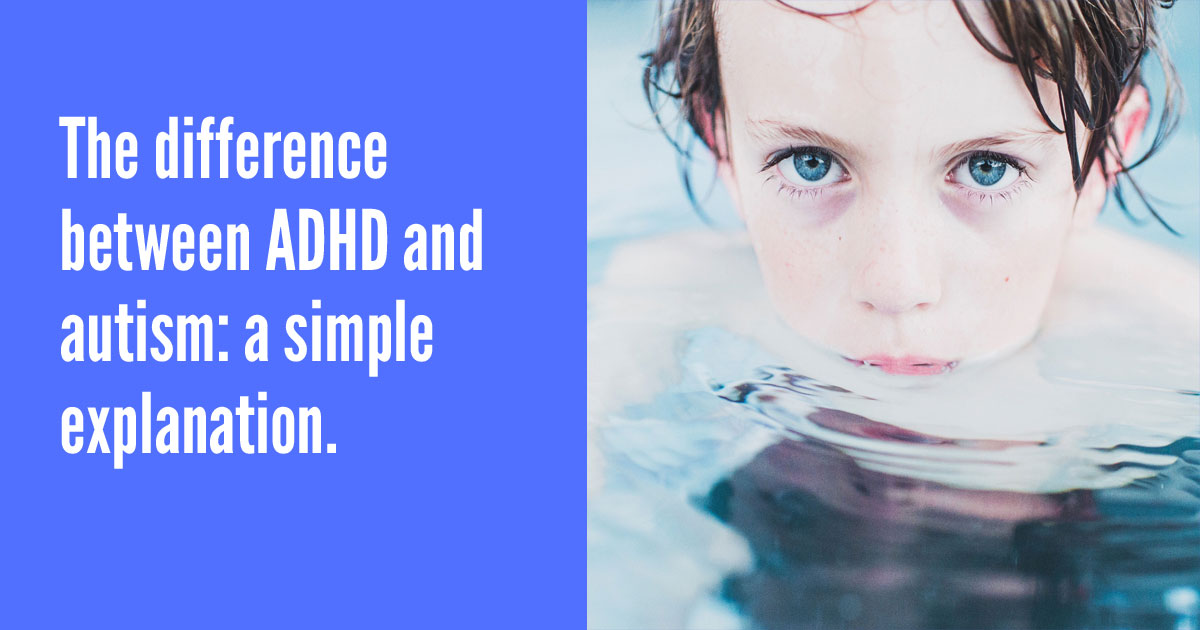When a pupil starts misbehaving in the classroom, we often focus on the things they do that are challenging, or against the rules.
And this is natural, because we want those behaviours to ‘go away’. For the good of the student, the rest of the class, and our own stress levels. So we focus on the shouting out, or bad language, or lack of attention.
However, it can be more productive to look at what’s causing those behaviours. Identifying the barriers to learning that result in challenging behaviour.
As teachers, our role is not to diagnose students with special needs – that’s the job of medical professionals. Our role is to ask if potentially there’s a special need driving the inappropriate behaviour we’re seeing in the classroom.
Then we can get support from the right professionals early on.
In this article, I’m going to look at two common conditions, ADHD and autism – and what they might look like in the classroom.
ADHD (Attention Deficit Hyperactivity Disorder)
Let’s start by looking at the terminology:
- Attention Deficit: finding it difficult to concentrate, stay on task or remember detail compared to the student’s age group. Since young children can be inattentive anyway, it may take a while to diagnose.
- Hyperactivity: being physically active and impulsive. Importantly, the student doesn’t appear to be in control of their actions. They don’t think things through. Boys often talk in a very loud voice.
A child doesn’t need both attention deficit and hyperactivity to be diagnosed with ADHD. They can have attention deficit, hyperactivity or both.
ADHD isn’t a social disorder in the way that autism is; however, because of their impulsive behaviour, children with ADHD often find it difficult to sustain friendships.
Figures vary: up to 11% of children may have it, and diagnosis rates have risen over the last 10 years. It affects boys more than girls, though it may be under-diagnosed in girls, who tend only to bring the attention-deficit component.
An ADHD child may be taking medication to control their condition. Contrary to popular belief, these are not sedatives. Some could be stimulants to make the body slow down in reaction. There are concerns about how this can affect appetite and physical growth.
More info:
https://www.forwardthinkingbirmingham.org.uk/conditions/adhd
https://www.webmd.boots.com/add-adhd/guide/adhd-children
Shameless plug: if you teach a student with ADHD you may find ADHD: Calm and Refocussed useful. It gives you 6 simple things you can do in the classroom to improve focus and decrease disruption.
You may also find our article on 5 ADHD myths useful.
Autism
You may also hear autism called:
- ASD (Autistic Spectrum Disorder)
- ASC (Autistic Spectrum Condition)
Autism is more complex than ADHD and has a collection of symptoms.
Most often, these include problems with:
- processing language (both speaking and listening)
- handling social relationships
- theory of mind (difficulties seeing things from other’s perspectives)
- inflexibility (insisting things are done in a certain way)
- anxiety about change
- sensory issues (being over- or under-responsive to noise, taste, touch etc.)
Not all children with autism have all the symptoms. You’re unlikely to see the most extreme cases in mainstream school (e.g. children who cannot use speech at all.)
Autism affects an estimated 1 – 1.5% of the population, though diagnosis rates are increasing.
Until recently, experts thought it affected more boys than girls. Some now think that girls manage their condition for a while by mimicking their peers, until their teens. Then the social competition hots up and they flounder.
Aspergers is a specific form of autism. Chris Packham of BBC’s “Autumnwatch” recently made a film about his Asperger’s (well worth watching if you can find it on the iPlayer or YouTube). He said he’d always felt different, but didn’t get diagnosed until his forties.
The Autism Education Trust (AET) is rolling out a programme of training for all schools. This is to help schools adapt the environment for ASC children and to build up staff knowledge and skills:
http://www.autismeducationtrust.org.uk/
What next?
If you suspect a child in your class is presenting behaviours driven by autism or ADHD, talk to your SENCo or Head of Department about providing systematic support.
These conditions are barriers to learning, like dyslexia and other problems. In the United Kingdom, it is likely that an “Assess, Plan, Do, Review” (APDR) cycle will apply. You will need to show the child’s needs, what you did and what were the results.
We also have more information available in our SEN Behaviour Handbook (it’s a free download).
The SEN Behaviour Handbook gives you:
- more detail about what classroom behaviours to look for
- cheatsheets to support your teaching of students with ADHD, autism and attachment disorder

